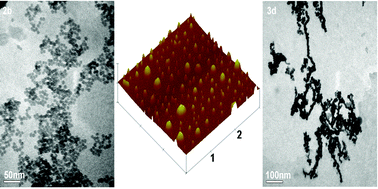In this article, we report the synthesis, structure, morphologies, and asymmetric catalytic properties of a series of novel organosoluble zirconium phosphonate nanocomposites and their supported chiral ruthenium catalysts, which have a good organosolubility (0.1–0.5 g mL−1) in various solvents and mesoporous, filiform, and layered structures. Due to the organosoluble properties in various organic solvents, the first homogenization of zirconium phosphonate-supported catalyst was realized in the field of catalysis. In the asymmetric hydrogenation of substituted α-ketoesters, enantioselectivities (74.3–84.7% ee) and isolated yields (86.7–93.6%) were higher than the corresponding homogeneous Ru(p-cymene)(S-BINAP)Cl2 due to the confinement effect caused by the remaining mesopores in the backbone of the zirconium phosphonate. After completing the reaction, the supported catalyst can be readily recovered in quantitative yield by adding cyclohexane and centrifugation, and reused for five consecutive runs without significant loss in catalytic activity.

You have access to this article
 Please wait while we load your content...
Something went wrong. Try again?
Please wait while we load your content...
Something went wrong. Try again?


 Please wait while we load your content...
Please wait while we load your content...